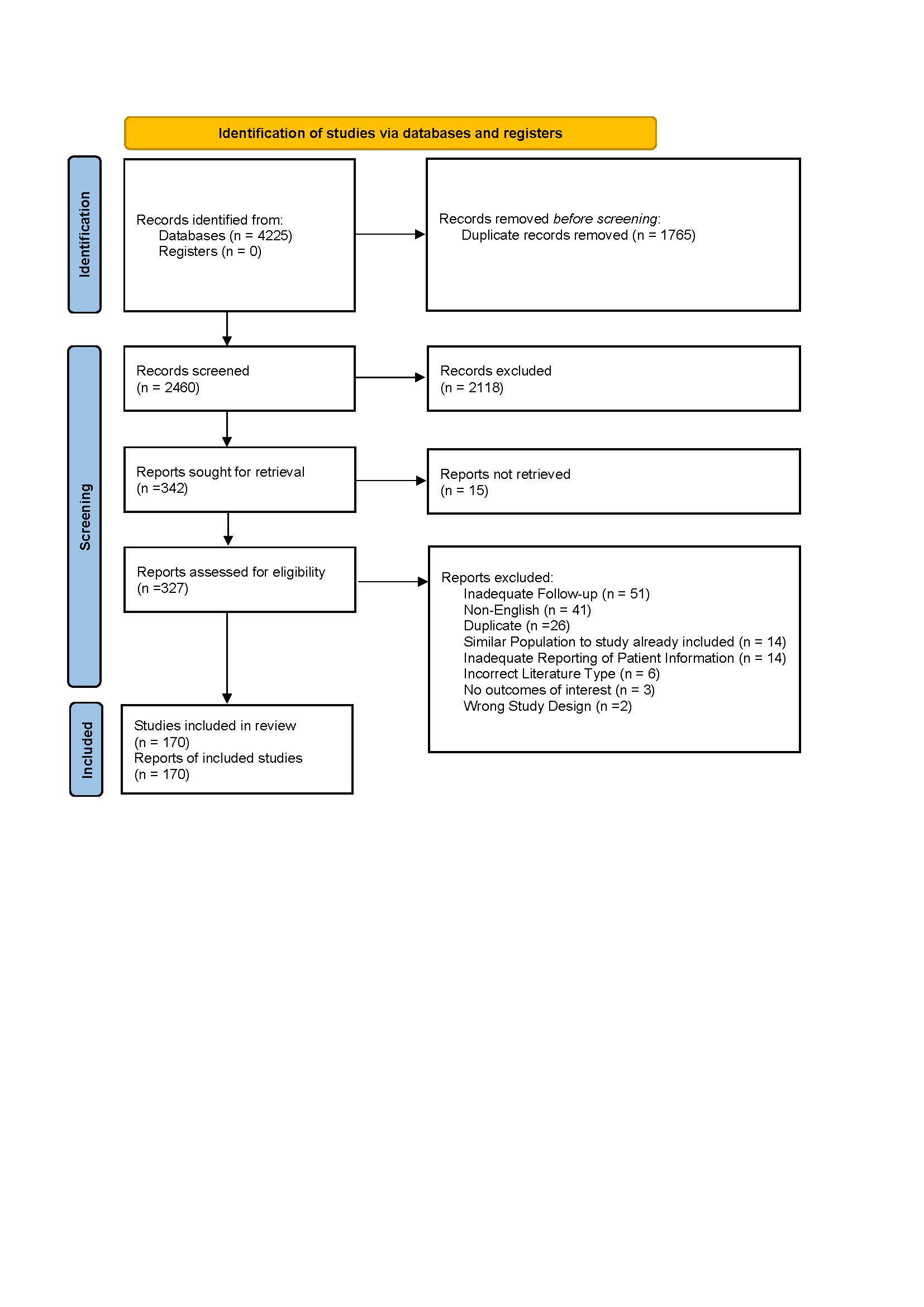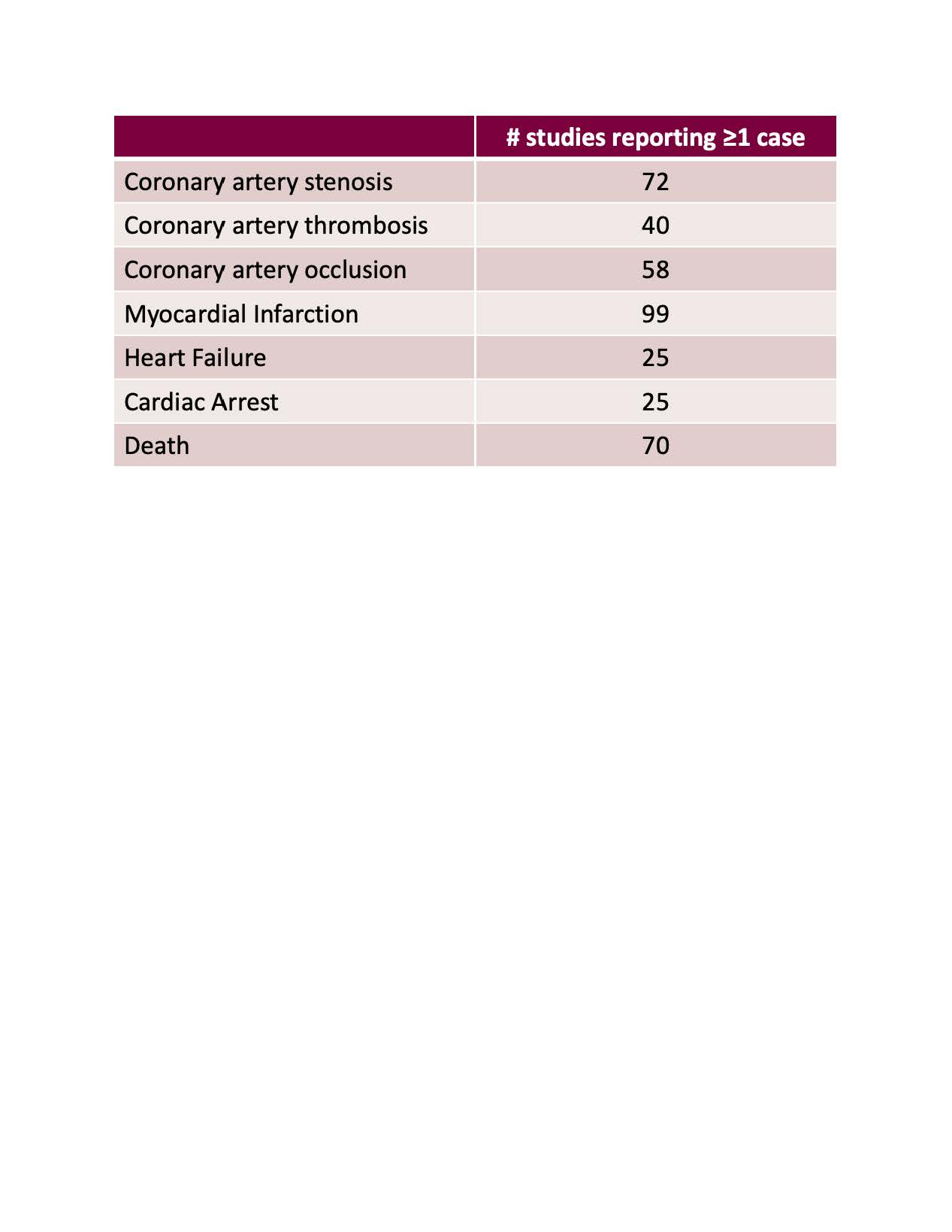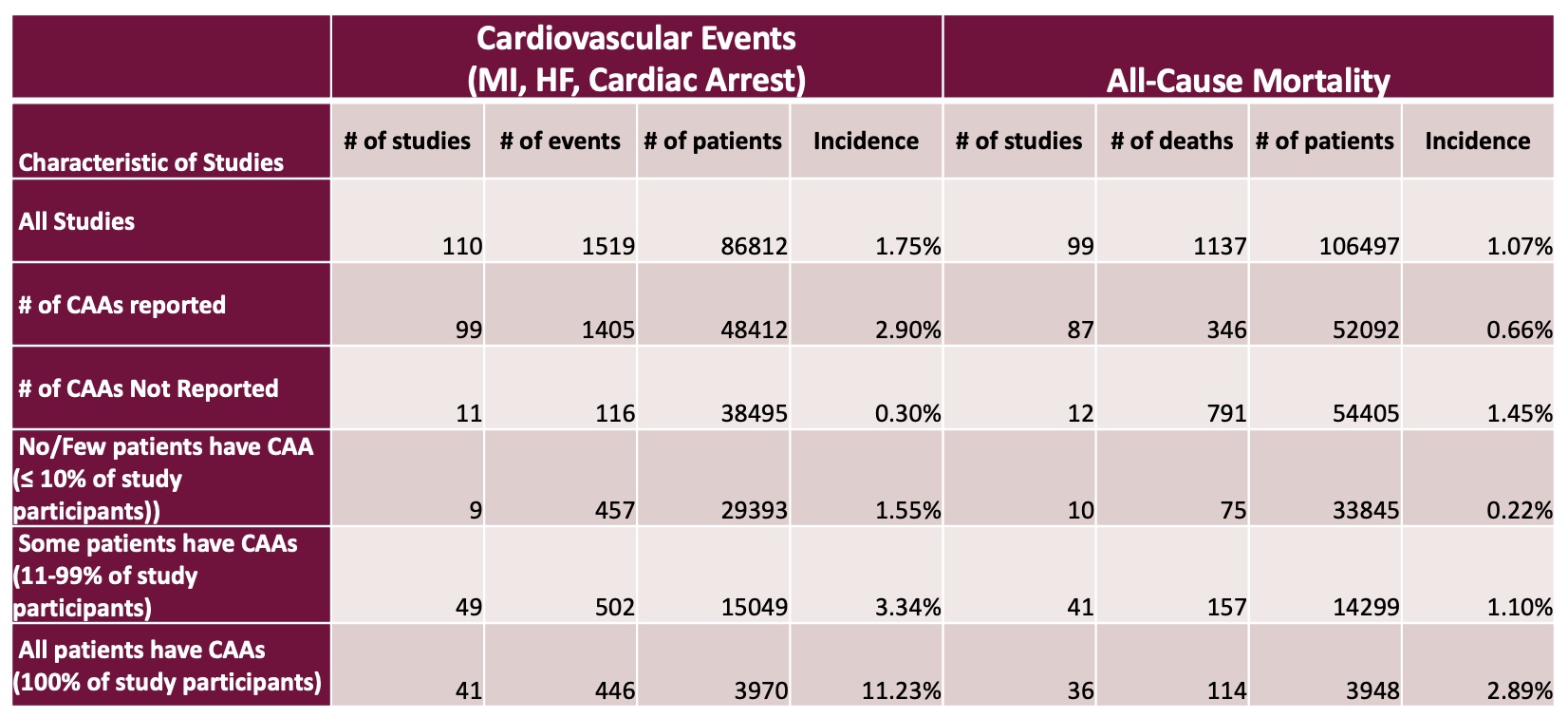Session Information
Date: Tuesday, November 9, 2021
Title: Pediatric Rheumatology – Clinical Poster III: Miscellaneous Rheumatic Disease (1614–1644)
Session Type: Poster Session D
Session Time: 8:30AM-10:30AM
Background/Purpose: Kawasaki Disease (KD) is a common vasculitis of childhood, with an annual North American incidence of 20-26 per 100,000 children (< 5 years of age). Coronary artery aneurysms (CAAs) develop in 25% of untreated KD patients. There are no precise estimates of the long-term cardiovascular (CV) events following childhood KD diagnosis. We aimed to determine the incidence of long-term CV events and mortality following KD diagnosis.
Methods: A systematic search of MEDLINE, EMBASE, CINAHL, Cochrane, and Web of Science databases was performed through 2019. Initial screening was performed by 2 independent reviewers. Inclusion criteria included English-only publications, patients 0-18 years at KD diagnosis, minimum follow-up >1 year, and ≥10 patients included in original clinical data. CV events (myocardial infarction (MI), heart failure (HF), cardiac arrest) and mortality were extracted and pooled for analysis. The Newcastle-Ottawa Scale assessed study quality focusing on participant selection, comparability, and measurement of outcome or ascertainment of exposure. This review was submitted to PROSPERO on November 23, 2019 and registered on April 28, 2020.
Results: Of 4225 articles identified, 170 were included in the review (Figure 1). The distribution of study designs was: 123 retrospective cohort studies, 54 prospective cohort studies, 2 case series, 13 cross-sectional studies, 1 case control study, and 4 interventional studies. A total of 167 articles had quality assessment scores ≥6 out of a maximum score of 9. The number of studies reporting coronary artery stenosis, coronary artery thrombosis, coronary artery occlusion, CV events and death are displayed in Table 1.
Among 86,812 KD patients across 110 studies, there were 1519 events of MI, HF, or cardiac arrest (1.8%). A subgroup analysis was performed, stratifying studies by CAA status of participants: no/few CAAs (≤ 10% of study participants), some CAAs (11-99% of study participants), all CAAs (100% of study participants). This was performed to determine the effect of CAAs on incidence of CV events and mortality. Composite CV events occurred in 457 of 29,393 (1.55%) in no/few CAAs study participants, 502 of 15,049 (3.34%) some CAAs study participants, and 446 of 3970 (11.23%) all CAAs study participants (Table 2).
Across 99 studies, 1137 of 106,497 KD (1.07%) patients died. When stratified based on the proportion of patients in the study with CAAs: death occurred in 75 of 33,845 (0.22%) in no/few CAAs study participants, 157 of 14299 (1.10%) in some CAAs participants, and 114 of 3948 (2.89%) in all CAAs study participants (Table 2).
Conclusion: This study comprises the largest review of long-term cardiovascular outcomes of KD. Children with KD are at risk of developing long-term CV events, including MI, heart failure and cardiac arrest. Those with coronary artery aneurysms are especially at higher risk. Further studies are needed to better define these risks.
 Figure 1: PRISMA flow diagram of study selection
Figure 1: PRISMA flow diagram of study selection
 Table 1: Number of studies reporting at least one case of coronary artery stenosis/thrombosis/occlusion, CV events and death.
Table 1: Number of studies reporting at least one case of coronary artery stenosis/thrombosis/occlusion, CV events and death.
 Table 2: Incidence of cardiovascular events (myocardial infarction, heart failure, and cardiac arrest) and all-cause mortality.
Table 2: Incidence of cardiovascular events (myocardial infarction, heart failure, and cardiac arrest) and all-cause mortality.
To cite this abstract in AMA style:
Lao F, Robinson C, Schlorff M, Ewusie J, Beattie K, Batthish M. Long-term Cardiovascular Disease and Mortality Following Kawasaki Disease in Childhood: A Systematic Review [abstract]. Arthritis Rheumatol. 2021; 73 (suppl 9). https://acrabstracts.org/abstract/long-term-cardiovascular-disease-and-mortality-following-kawasaki-disease-in-childhood-a-systematic-review/. Accessed .« Back to ACR Convergence 2021
ACR Meeting Abstracts - https://acrabstracts.org/abstract/long-term-cardiovascular-disease-and-mortality-following-kawasaki-disease-in-childhood-a-systematic-review/
